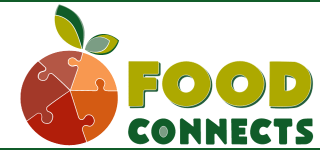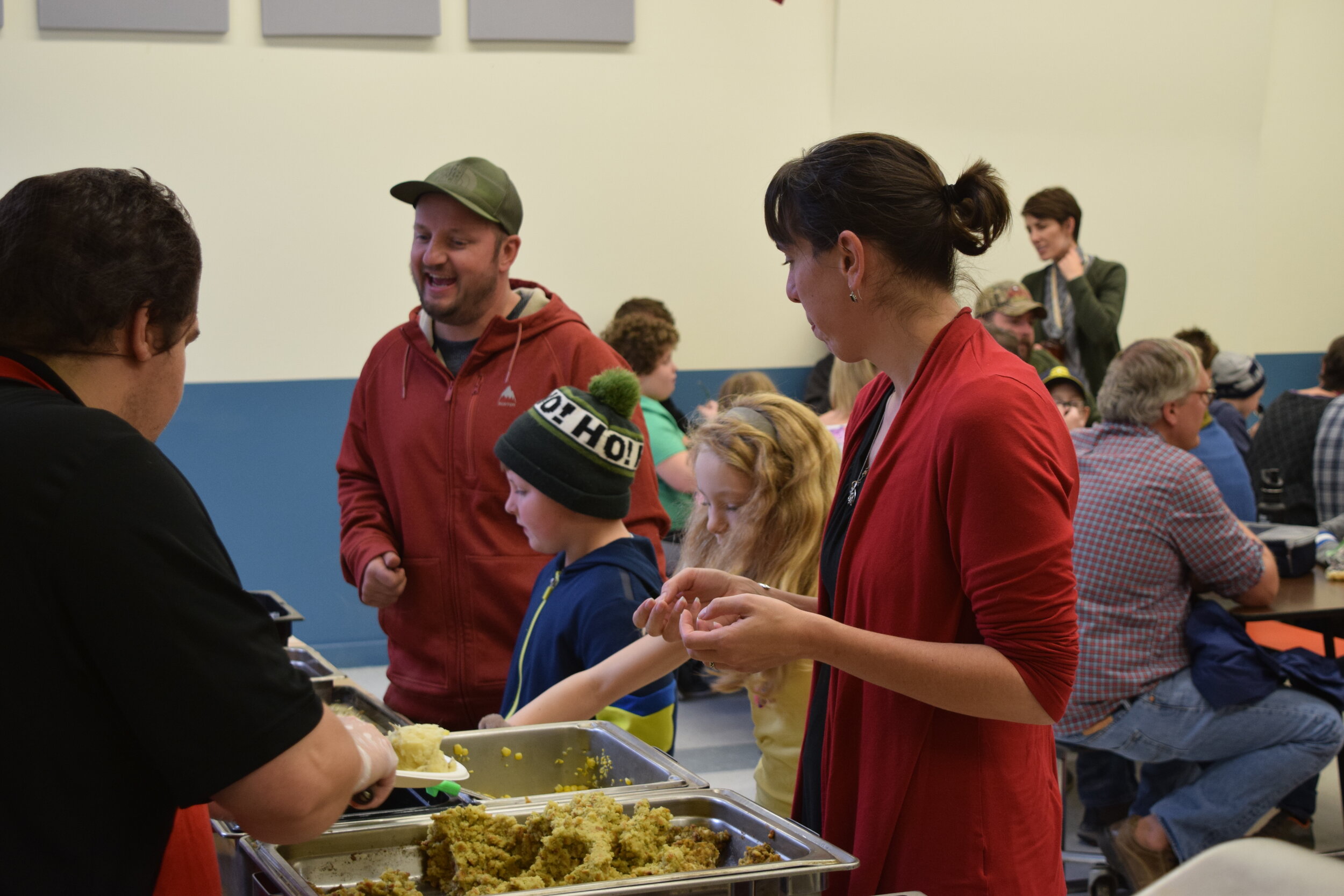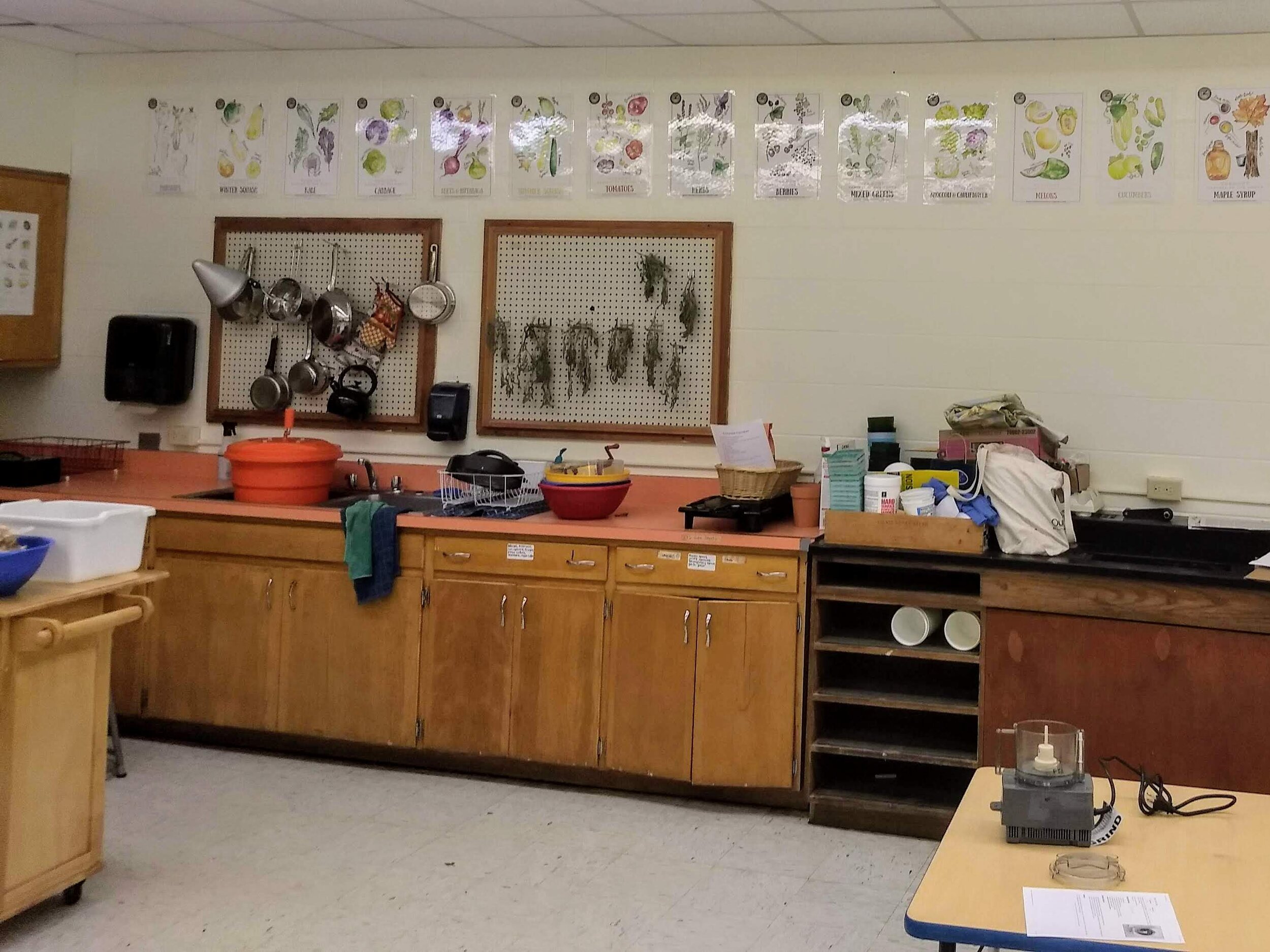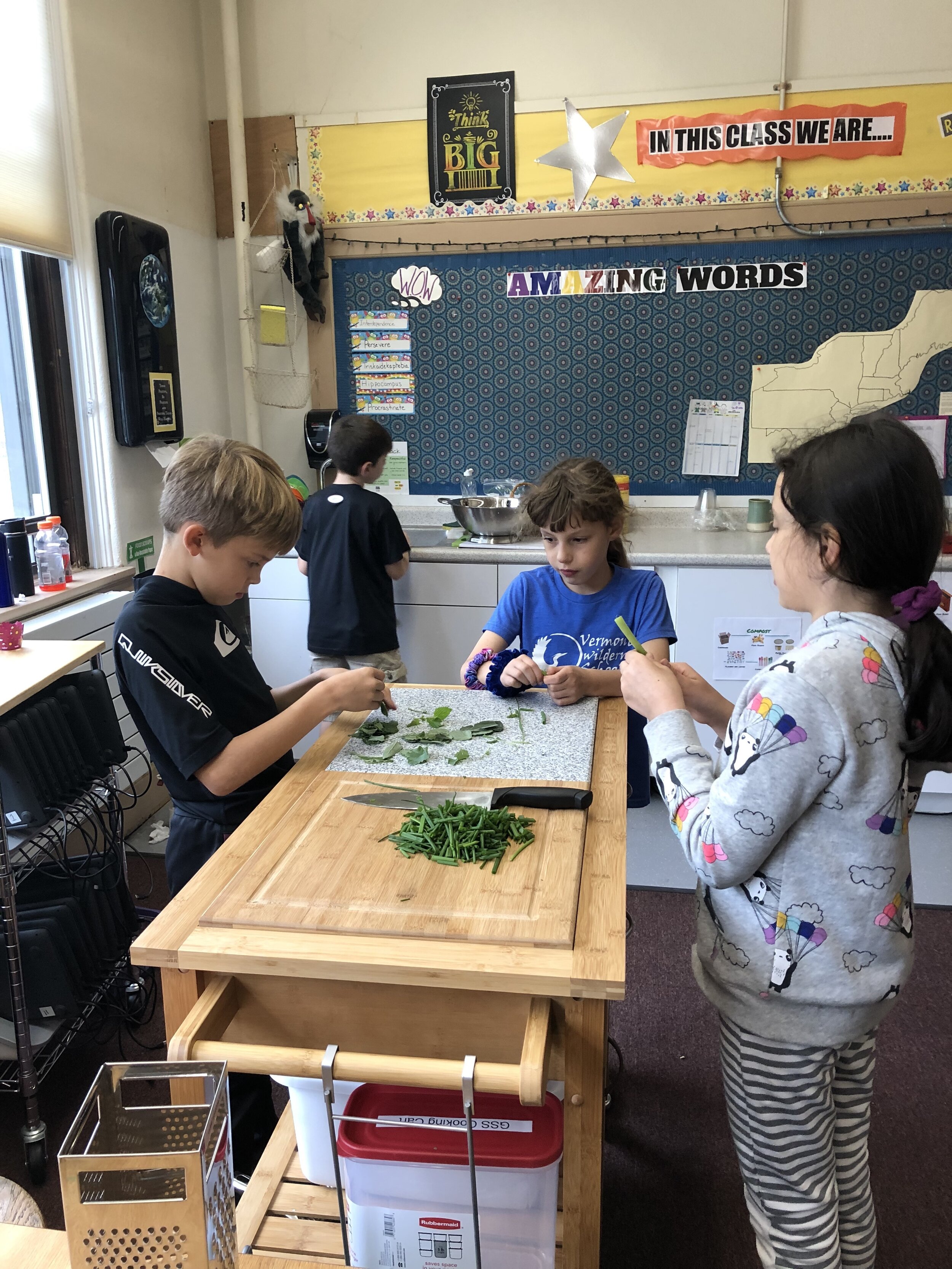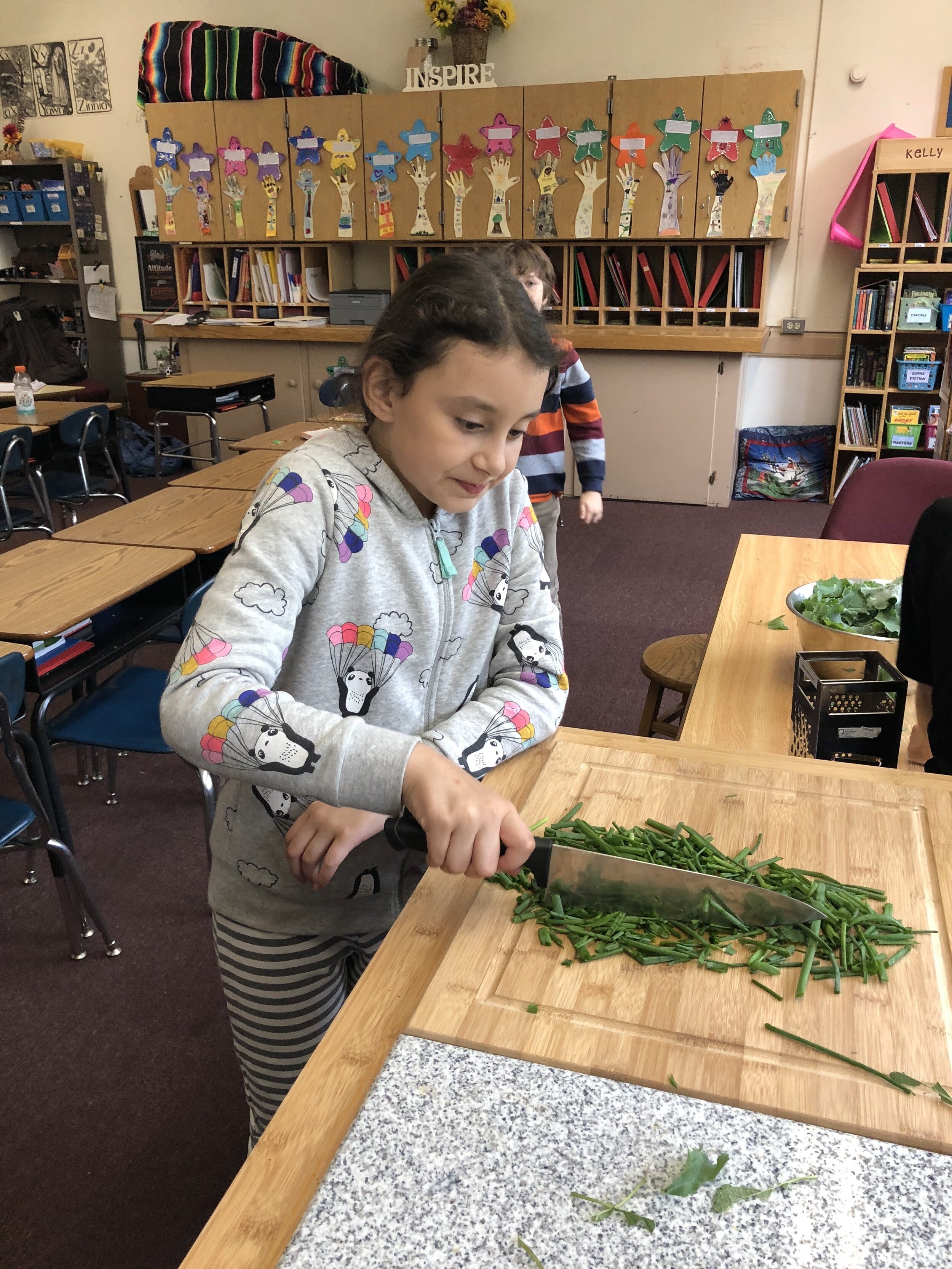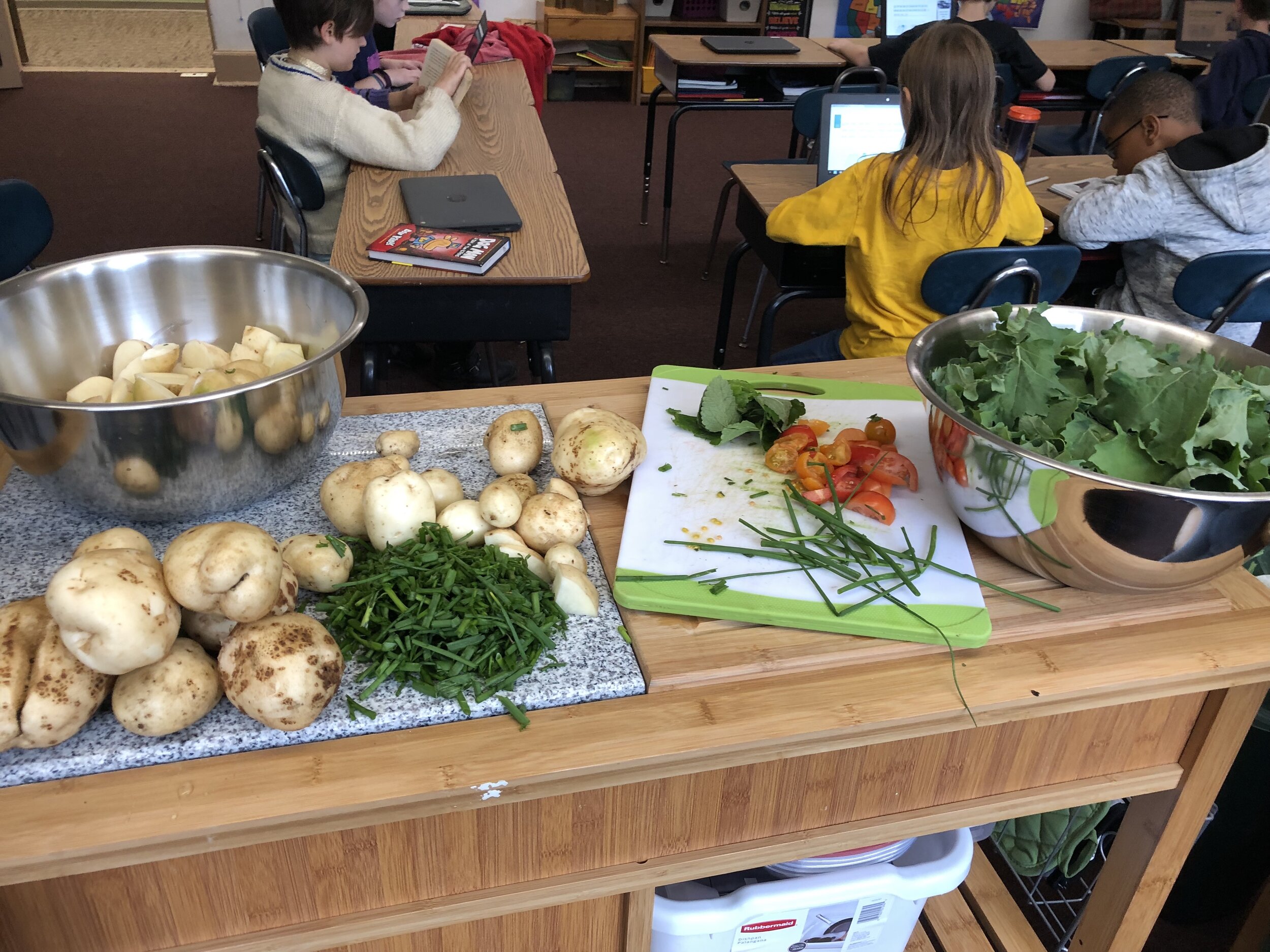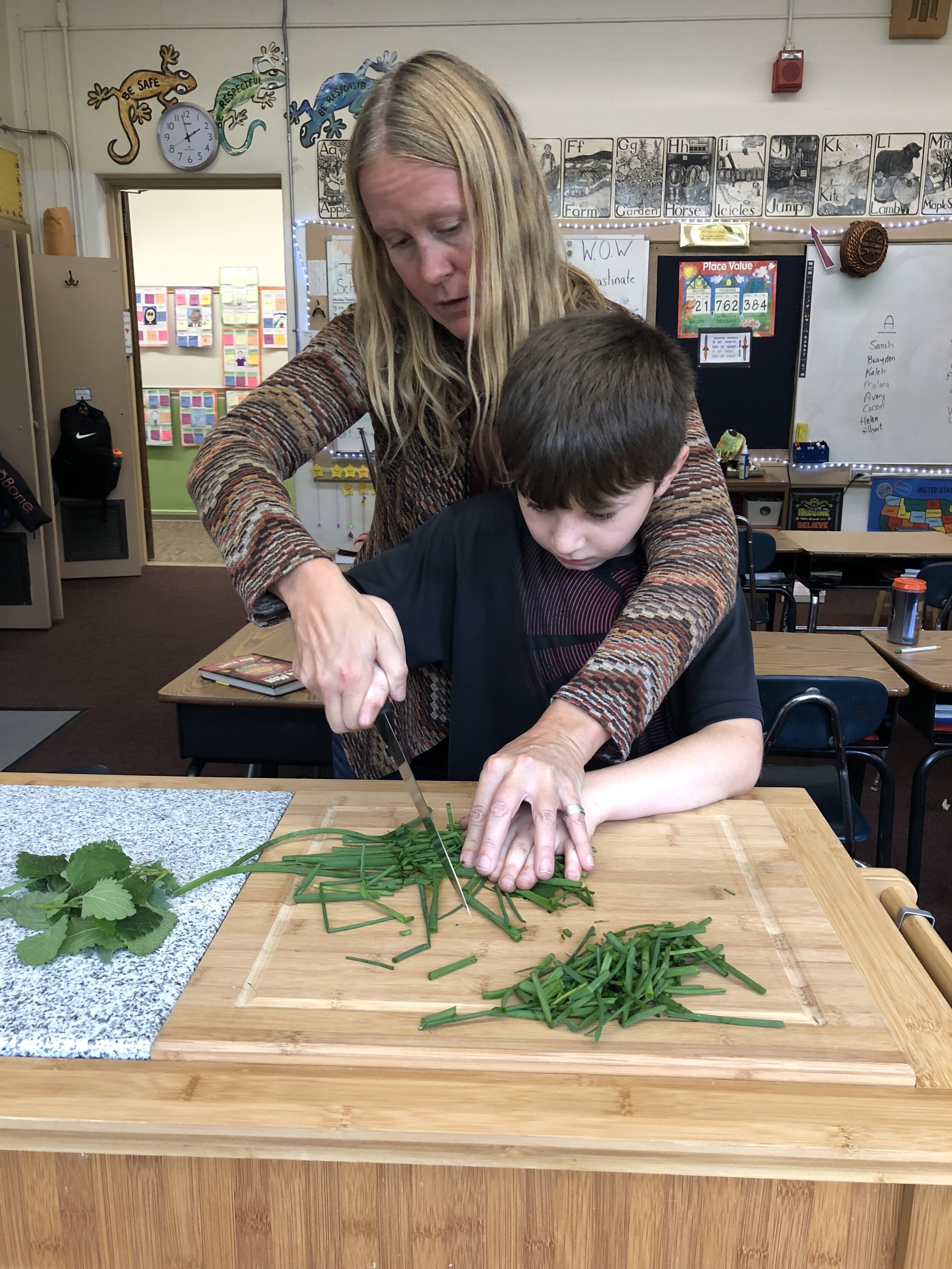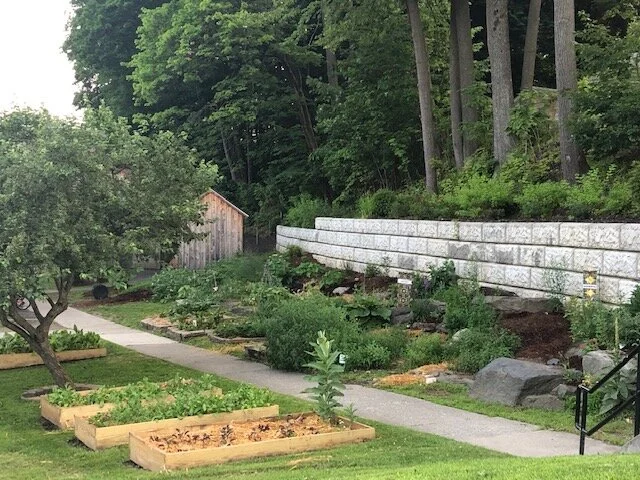Sheila Humphreys, Food Connects’ Farm to School Coordinator, and Ali West of Fresh Picks Cafe and the Brattleboro Town Schools’ Food Service Director, will present at the 10th National Farm to Cafeteria Conference. The conference will take place from April 21 to 23 in Albuquerque, NM.
The National Farm to Cafeteria Conference is a biennial event hosted by the National Farm to School Network. The conference convenes stakeholders throughout Farm to School to “source local food for institutional cafeterias and foster a culture of healthy food and agricultural literacy across America.”
Sheila presenting at a recent Trauma & Nutrition training for local schools, hosted by Food Connects.
Sheila and Ali will present on the work they’ve done to incorporate a trauma-sensitive lens into Farm to School programming. With an increased awareness of the importance of trauma-informative practices in schools, teachers and staff are discovering the strong role food plays in the conversation. “Food and trauma are intertwined,” says Sheila. “Food can establish a strong sense of community but can also be a point of stress and anxiety, especially in an overwhelming cafeteria environment, and for students experiencing food insecurity at home.”
Ali is an invaluable partner in this work and a Farm to School champion within the district and through statewide advocacy. She is instrumental in the implementation of new programs such as Share Coolers in the Brattleboro Town Schools, which allows students to share what they don’t eat, provides a quick and easy snack for others who may still be hungry, and reduces food waste. Through programs like these, and shifting the focus in the cafeteria to trauma-sensitive practices, Ali and Sheila work to reduce stigma around food, increase food access, and bring awareness to implicit biases.
Food Connects’ intensive work on developing a trauma-informed approach to education in the Brattleboro Town Schools wouldn’t be possible without their partners within the district and a two-year grant awarded by the Thompson Trust.
